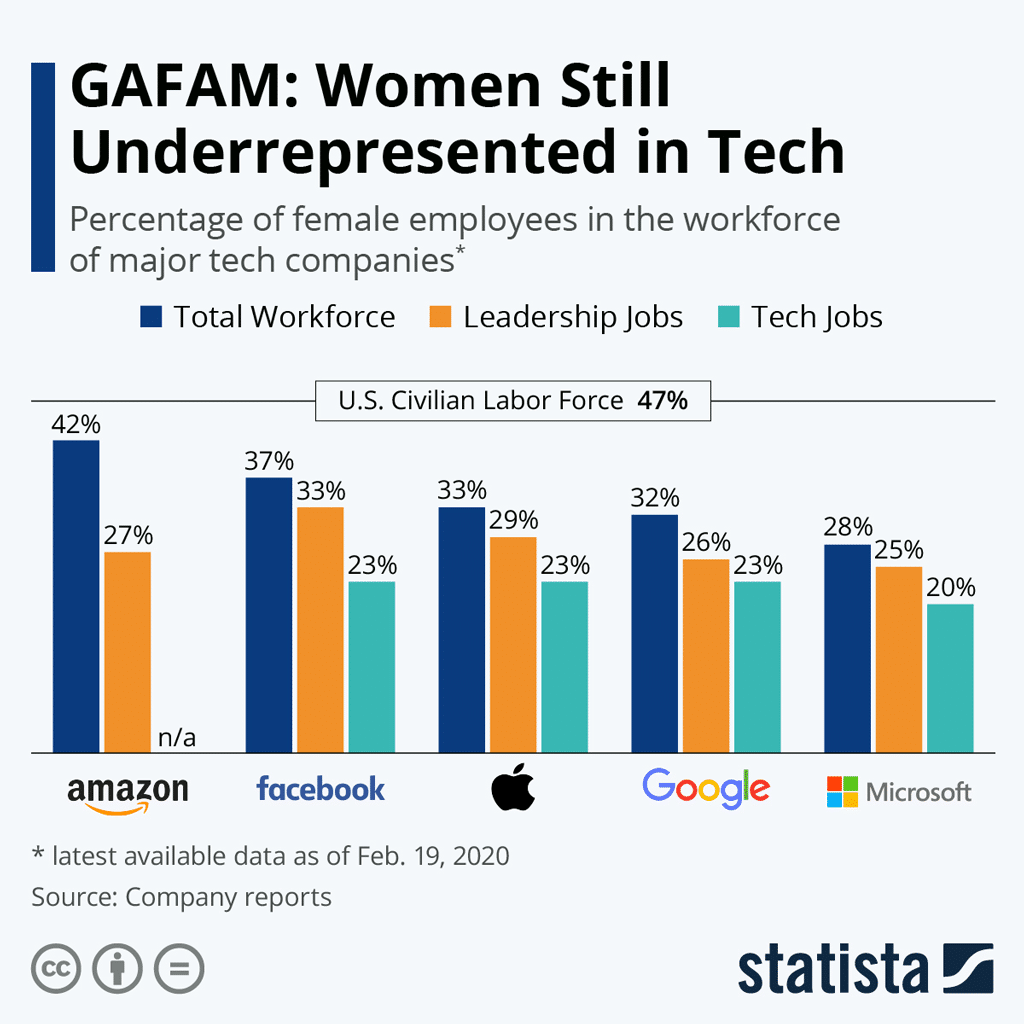The Role of Women in Technological Progress – A Series for International Women’s Day
Today, March 8, marks International Women’s Day. On this day, women around the world are meant to be recognized for their achievements and accomplishments. It’s no secret that STEM professions (science, technology, engineering, mathematics) still have a ratio of women that is below average. Unfortunately, the tech industry is also far from being an exception. But of course they exist here, too: Women who have achieved great things.
In our series of posts, we’d like to take a look at what great achievements women have accomplished in tech research and work. To do so, we will dedicate several blogposts to one woman each. Some of them have made significant contributions to scientific advances, while others are actively working to make technological careers more attractive to women. Throughout the blogposts, you’ll find resources that tell you more about how to help women succeeding in tech and STEM professions.
In this first post, however, we first want to talk about the role of women in STEM and especially tech professions. In doing so, we will first take a look at the past and then look at the current state.
Historical classification – Conventions and computers
It is absolutely not the case that women in technological, scientific or IT professions are a novelty. In the past century, many women worked in technological professions, some of which have only recently come to public attention.
The problem: Their achievements, if they were recognized at all in their time, were forgotten. One of the reasons for this may be that for a long time it was not the convention for women to work at all, certainly not in technological professions. Thus, the few female scientists and workers were often regarded to be unskilled laborers who did the work that men did not have time for.
Nevertheless, in the field of computing in particular, there were many women who, through their achievements on both a large and small scale, contributed significantly to scientific progress.
Today, of course, the situation is somewhat different in terms of numbers. Female workers are still underrepresented in the workforce overall, but at least the percentage among the total workforce in Germany is now 46.6% (as of 2019). This figure should nevertheless be treated with caution, as women work part-time far more often than men. What is clear, however, is that it is no longer unconventional for women to pursue wage employment. However, the proportion of women is much lower, especially in STEM professions. We would now like to take a closer look at this fact.
The current state – A slow evolution
Before we look at the current state: It is obvious that there are big regional differences when it comes to women at work. Whether or not women are accepted in the workforce depends on, among other things, the cultural framing. However, the fact that women are underrepresented in technological jobs applies to just about every country we could find data on. Comparing international data is difficult because different factors are examined and often degrees and occupations cannot be generalized. Therefore, in this section we will focus on the situation in Germany to show the development in a European country as an example.
So what is the situation in Germany? Are the government-sponsored efforts to get women more involved in technological professions having an effect?
Most studies give cause for hope – by and large, there is some progress. However, the advances are small and are developing slowly. For example, the percentage of female students entering STEM fields is increasing very slowly. Twenty years ago, in 2001, that percentage was at 30.8%. In 2019, however, the percentage was 34.2%. If we additionally look at the percentage of females graduating in these subjects, the number has been increasing since 2015, but it had also been decreasing for five years before that.
Again, other figures emerge in the actual employment relationship. According to figures from the Federal Employment Agency (page 14), about 17% of employees in STEM professions were women in 2022. In technical occupations, only 14% of employees are female, while in computer science occupations the figure is 18%.
How well-represented are women in STEM fields?
Here’s a sampling of statistics and reports for:
USA
34% of all STEM master’s degrees (2017-2018)
European Union
17.9% ICT Specialists (2019)
Africa
30% Women researchers in all fields (2015)
Asia-Pacific Region
Vastly different, but fewer women everywhere the higher the qualification

Picture by SeventyFour on iStock
These numbers reflect on the fact, among other things, that more women are working in academic STEM jobs than in non-academic STEM jobs. Again, there are many complex reasons. One of them is that female participation in academic STEM occupations has been encouraged more frequently and earlier. In addition, many professions in which tech-professionals are sought are so heavily influenced by male stereotypes that it is even more difficult to gain a foothold as a woman. Of course, the first point also in part causes the second.
By the way, in SMEs in particular, not only is the number of female managers decreasing, but the active promotion of female employees is also declining. So the developments are not positive everywhere.
Fortunately, however, the overall trend does show an increase in female employees in STEM professions, which speaks for a softening of entrenched prejudices. In the end, even a small, steady development is fortunately a step in the right direction. Nevertheless, greater efforts, especially on the part of companies, would be desirable. We will talk about ways for companies and employers to do their part for greater gender equality in one of the following posts in this series.
Women in Tech – More than innovation
In a work environment that is as drawn to innovation as the tech industry, dated conventions and prejudices should actually be easy to break down. Unfortunately, it doesn’t work out that way.
Let’s take a look at the American tech industry as an example. Companies that are successful here tend to place less emphasis on tradition and more on innovation and flexibility. Tech companies boast of alternative work concepts, are eager to experiment with their strategies and want to promote the creativity of their employees. Still, the situation doesn’t look any better for female employees. At the beginning of 2020, 34.4% of the employees in the largest five U.S. tech companies were female, well below the overall North American average of 46.8% for all industries.
Even more marginalized groups have a very hard time as well – for example, although the industry bills itself as trans-friendly, the ideals are nowhere near the reality. Instead, trans women’s stories are concerned with disadvantage when they have to reapply with the same resume after transition. Example 1, Example 2.
Female share of the workforce at the five largest U.S. tech companies, visualised by Statista
It looks even worse for the industry in terms of ethnic diversity. Less than 2% African American, LatinX, and American and Alaskan Native women work at 177 Silicon Valley companies. Let that sink in.
At least in terms of the below-average number of women in STEM and tech jobs, several reasons have been explored. They are diverse, linking early educational approaches, lack of representation, and complex sociological and psychological effects to the systematic problems women face in male-dominated fields. This is likely to affect the heavily male-dominated tech industry in particular.
But the reasons also show that companies need to take action to give female employees equal opportunities and retain them. In some cases, this may mean that not only an adjustment of HR strategies is needed, but also a general rethinking of goals. Nevertheless, even small adjustments can help, and one thing above all: education. No manager can know what to do if they are not aware of the problem.
According to a study by Microsoft, female role models are particularly important for getting more girls to pursue their interest in STEM subjects.
A mirror of society
In short, even though the trend is broadly pointing in the right direction, efforts to improve inclusion should definitely continue in the tech industry as well. There are always submarkets where the percentage of female employees is declining. It is clear that there is still a long way to go before equality is achieved, both for women and for minorities of all kinds. This equality should be one of every company’s own goals, because they do not exist separately from society per se. Equality for all employees in the workplace will promote better equality in general.
Finally, we are happy to showcase some great female role models in our series and hope you can take something away from it as well.
International initiatives to promote women in tech and STEM
German initiatives to promote women in tech and STEM
National Pact for Women in STEM Professions: Komm, mach MINT
Femtech
MINTtoolbox
Girls’ Day
Best wishes
Header: iStock.com/Cecilie_Arcurs
